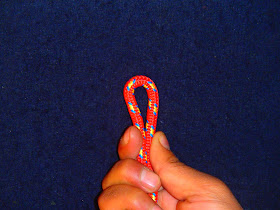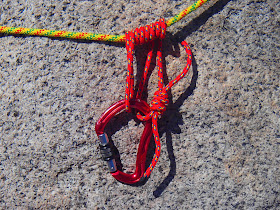On my travels working and teaching raft guides & safety kayakers around the world I have noticed a reoccurring issue. When under pressure most people struggle to correctly tie a Prusik knot.
I have devoted this post to providing some hints on how to tie the Prusik first time every time. I am going to divide the post into a few key areas.
1. What is a Prusik & what is it used for?
2. Prusik choice
3. Prusik knots (3 wrap, French, Klemheist)
4. Summary
1. What is a Prusik & what is it used for?
Prusiks allegedly first appeared in an Austrian climbing manual in 1931 as a way to ascend a rope on a climbing route. The Prusik hitch was first used by Karl Prusik.
In a whitewater & rope rescue background the Prusik is mainly used as a rope grab to attain progress capture in a rope system, normally a Mechanical advantage system.
A Prusik is simply a thin piece of chord or webbing tied into a loop normally with a double fisherman's knot. The Prusik is then tied onto the thicker rope in such a way that it will not slide down the rope when loaded by pressure.
 |
| 2 Prusik loops both tied with a double fisherman's knot. |
2.Prusik choice
 |
| A selection of different Prusik loops |
Prusik loops can come in all shapes and sizes. Some are joined with a knot, some can be pre-sewn.
The thickness of the chord you use to make you Prusik loop is quite important though.
The chord you use to tie your Prusik loop with needs to be thinner than the rope that you are tying the Prusik to. So its a good idea to know the thickness of your throwbag rope or other ropes that you normally carry on the river. An ideal thickness for a standard Prusik is between 6-8mm.
A good way to test this is by using the Pinch test. Simply pinch a section of your Prusik into a loop. The diameter of the loop should not be thicker than the line in which you would like to attach the Prusik too.
 |
| 8mm chord for thicker ropes greater than 8mm. |
 |
| 7mm chord ideal for all ropes greater than 7mm (most throw ropes). |
 |
| Sterling ropes 6mm flat sewn sling. Ideal for thin ropes. The sterling Prusik also has a massive 22kn breaking strain. |
3.Prusik knots
There are many different way to tie a Prusik knot. I have chosen the 3 most popular methods. A working knowledge of these 3 methods will help you in most situations.
A: The 3 wrap Prusik
The 3 wrap is probably the most widely used Prusik knot. It is simple to tie and can be used in most applications.
 |
| Simply hold the rope with the double fisherman's knot close to the rope. |
 |
| You then need to make a girth hitch with the Prusik making 3 turns on the main line. |
 |
| 2 turns |
 |
| 3 turns. Be sure to dress the knot to make it work first time every time. |
B: The French Prusik
Perhaps the most simplest of Prusiks to tie. Simply wrap the Prusik 3 times around your main line and clip the ends together. |
| 1 turn |
 |
| 2 turns |
 |
| 3 turns & clip into your carabinner. |
C: The Klemheist Knot
The Klemheist is a variation of the French Prusik and can be tied with webbing too. The Klemheist is best located at the load end of your system closer to your load (pinned kayak or raft) as it is hard to work with a Prusik minding pulley.
 |
| Keep your webbing as flat as possible and make 3 wraps around your mainline. |
 |
| Leave a shorter loop at the end closer to your load (pinned raft or kayak). |
 |
| Pass the longer end of your loop through your shorter loop and clip in. |
4. Summary
1. Check the diameter of your throwbag. Your Prusik chord needs to be thinner in order for it to grip the rope.2. Make sure that your Prusik knot is dressed properly and tightened before you use it.
3. Don't make your Prusik loop to long as you will lose any progress capture during a system re-set.
 |
| Having your Prusik too long will result in a loss of progress capture. |
 |
| A snug fitting Prusik will prevent you losing progress capture during a re-set. |
5. Practice, Practice,Practice
See you on the river
Mark
Further reading can be found at Animated Knots.

No comments:
Post a Comment